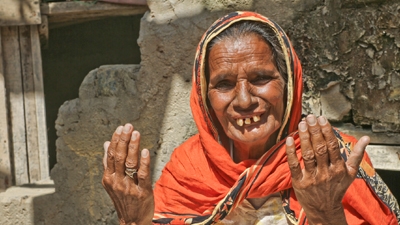Overview
One-third of Pakistan’s population continues to live in poverty, corresponding to some 50 million poor individuals. Women and children (out-of-school/working), disabled, and potentially the elderly, are the most vulnerable groups of poor.
The poor live mainly in rural areas, are unskilled, and work in the informal sector. Employment opportunities are scarce and real earnings have declined in the last decade. The poor also lack in all of the basic human, physical and productive assets and have limited or no access to essential social services.
In addition approximately 56% of households can be classified as vulnerable. According to a special survey on safety nets commissioned for the social protection report, “Managing Household Risks and Vulnerabilty (2007), nearly two thirds of all respondents suffered from one or more major shocks in three years before the survey. More than half of all shocks (about 60 percent) were caused by individual specific factors (mainly health, sickness and disability) highest incidence of shocks. The remaining shocks were covariate (including droughts, economic shocks, etc.). These shocks imposed huge costs on the ultra-poor (54 percent of annual consumption) than the non-poor (18 percent of annual consumption). While the non-poor households used mainly asset based strategies (sale of physical assets, dissaving) to cope with risks, the poor relied more on behavioral strategies—reducing consumption, increasing labor supply). The devastating impact of shocks was painfully illustrated by the recent earthquake and droughts, which showed that households in Pakistan are vulnerable to natural disasters, with the poor often the hardest hit as they own limited assets. The recent commodity and financial crisis have also adversely affected many households.
Traditionally, Pakistan’s social protection system included several social assistance programs (Bait-ul Maal and Zakat) of limited coverage. As in all other South Asian countries, Pakistan implements a pension program for civil servants and private sector workers.
Challenges
A recent review showed that:
- Safety net programs are fragmented and often duplicative.
- Programs have limited coverage, covering approximately 2-3 percent of the total population as compared to a poverty rate of about 25 percent.
- Programs are poorly targeted. For example, 25 and 32% of resources distributed by the Food Support Program and Zakat, the country’s largest cash transfer programs, accrue to non-poor households)
- Implementation and M&E capacity is very low.
- There are inadequate institutional arrangements for multi-sectoral orientation of social protection agenda.
- Finally, existing capacity for the provision for rapid assistance to those affected by natural disasters, such as earthquakes and droughts is insufficient.
Considerable investment in effective administrative systems will be needed to ensure that safety net programs are able to overcome these constraints and efficiently target the poor. The Government has already made an impressive step in this regard by adopting a national targeting formula and is in the process of identifying and strengthening its implementation.
Recognizing the need to modernize its social protection system, Pakistan developed and adopted a National Social Protection Strategy (2007). Consistent with the Poverty Reduction Strategy and Pakistan Vision 2030, the Strategy provides a sectoral framework to address poverty alleviation. Priority areas for policy action and reform that were identified in the strategy are:
- Increasing access to economic opportunities among poor;
- Preventing households/individuals from falling into poverty due to income shocks; and
- Providing basic needs for chronic poor, and those unable to work.
In 2009, as a key element of this strategy, Pakistan introduced a national safety net program, the Benazir Income Support Program (BISP) which is intended to be a modern and well governed safety net with the objective of providing a significant share of the poorest population with basic income support and opportunities to graduate from poverty.
